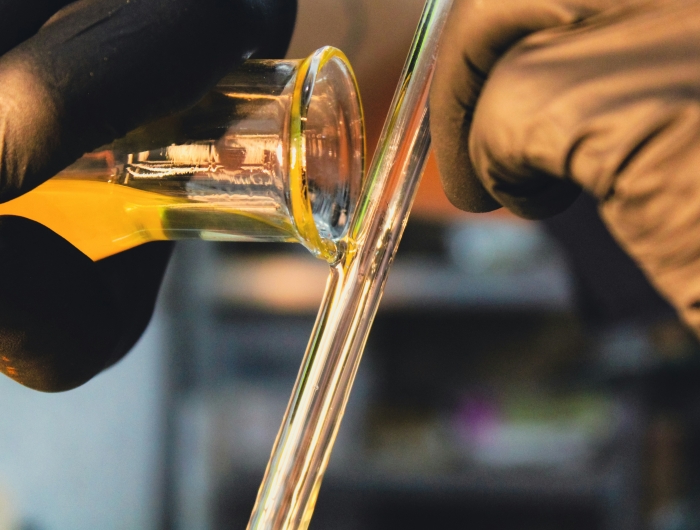Secret ingredients lurk in food, hidden as 'artificial flavor,' 'natural flavor,' and 'spices'

Fulvio Ciccolo - unsplash.com.
Report calls for reforms to protect consumers from the $14 billion flavor industry
While almost all ingredients used in food must be disclosed on ingredients lists, federal regulations allow manufacturers to obscure some ingredients behind the vague catch-all terms “artificial flavor,” “natural flavor,” or “spices.” A report released Thursday from the nonprofit Center for Science in the Public Interest explores the problems that arise when companies hide ingredients behind these terms and calls for reform to protect consumers from dangerous chemicals, allergens, or unwanted animal products in foods and beverages.
Flavors can come from natural ingredients or can be synthesized in a factory. The flavor of vanilla, for instance, can be extracted from the vanilla bean, or it can come from artificially produced vanillin and other chemicals found in the bean. When flavors (not whole ingredients) are included in ingredients lists, they don’t need to be identified with the exact chemicals that make them up; rather, they can be described blandly as “natural flavors” or “artificial flavors.” A consumer has no way of knowing how many flavors might be in the product.
The loophole allowing the use of “natural flavors” and “artificial flavors” is baked into the 1938 Federal Food, Drug, and Cosmetic Act which otherwise requires ingredients to be listed on food labels. Federal law also requires that substances added to food, including flavor substances, be deemed safe before companies start using them.
But who determines when a flavor substance is safe? The short answer is that food manufacturers have two pathways to choose from. The first available pathway is for companies to submit a formal food additive petition to the Food and Drug Administration that includes information that substantiates the safety of the substance prior to marketing. The FDA then can perform a safety assessment, offer opportunity for public comment, and then decide to approve or deny the petition.
However, when Congress amended the Food, Drug, and Cosmetic Act in 1958, it created an exception for substances understood to be “generally recognized as safe,” or GRAS, so that traditionally used ingredients like vinegar, baking powder, and so on could bypass the formal approval process. Food and chemical companies now exploit this “GRAS loophole” in one of two ways to bypass FDA approval and make safety determinations with little-to-no oversight from FDA. First, they can submit a voluntary notice to the FDA affirming that an ingredient is GRAS based on the company’s own assessment. That’s a much less rigorous process than a formal food additive petition, but it at least gives FDA notice of imminent marketing and an opportunity to ask questions. Second, companies can determine for themselves that an ingredient is “generally recognized as safe” and begin using it in food without notifying the FDA, which CSPI calls the “secret GRAS” loophole.
Of the roughly 10,000 chemicals used in our food—or that can end up in food through contact with packaging—more than 3,000 have never been substantively reviewed by the FDA. An estimated 1,000 of those 3,000 substances have entered the food supply through the secret GRAS pathway, meaning FDA has no information at all about them. The rest of them were greenlit by panels convened by a trade group who purportedly provides information to FDA but not through formal GRAS notice.
“American consumers are likely laboring under the false impression that the FDA reviews and affirms the safety to the flavor additives used in food,” said CSPI principal scientist for food additives and supplements Thomas Galligan. “The fact of the matter is that the FDA has largely abandoned its role in approving new flavor chemicals and has handed its authority over to food companies. That’s an obvious conflict of interest and keeps consumers from knowing what’s in their food.”
Besides being able to determine ingredients are GRAS by themselves, companies may also turn to one of their trade associations, the Flavor and Extract Manufacturers Association, or FEMA. Self-described as “the authoritative voice advancing the safe and responsible use of flavorings,” FEMA pays a panel of scientists to perform safety evaluations leading to GRAS designations. While FEMA claims to limit conflicts of interest by its experts, the organization itself is paid by its members, and therefore has a strong interest to provide positive reviews to secure repeat business, which may bias the process in ways that are difficult to document, according to the report.
Manufacturers of dietary supplements can take advantage of the GRAS loophole also. The maker of the dietary supplement Prevagen, for example, took advantage of the secret GRAS loophole to designate its ingredient, apoaequorin, as generally recognized as safe even though it had twice failed the FDA’s premarket approval process for supplements.
CSPI’s report has several recommendations for federal and state policymakers. At the federal level, CSPI recommends requiring full disclosure of all ingredients, including spices and flavors, on packaged food and meat and poultry labels. Federal policymakers should close the GRAS loophole by requiring all flavor substances and other food chemicals to come to market via food additive petitions.
At the state level, CSPI supports the work of state legislators to ban unsafe and unnecessary food additives. The state of California recently enacted legislation banning four food additives—Red 3, brominated vegetable oil, potassium bromate, and propylparaben. That goes into effect in 2027. Legislators in New York state are moving legislation to ban those four additives plus azodicarbonamide, butylated hydroxyanisole (BHA), and titanium dioxide. That would take effect next year if adopted this year. A separate bill in New York would require food manufacturers to notify the state when using a chemical that has not been vetted by the FDA.
Finally, CSPI recommends that the food industry on its own begin full flavor and spices disclosure, and to stop exploiting the GRAS loophole—or at least the secret GRAS pathway—altogether.
# # #
Tags
Topics
Contact Info: Lisa Flores, 202-777-8368 or Jeff Cronin, 202-777-8370

